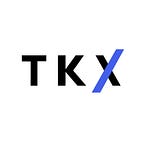All You Need to Know about Altlayer | TKX Weekly
by @uuwagyuu
sponsor TKX CAPITAL
In the evolving blockchain landscape, modularity has emerged as a key narrative, particularly after the launch of platforms like Celestia. Within this context, Rollup-as-a-Service (RaaS) stands out as a crucial component. AltLayer, as a RaaS project, exemplifies this trend by offering customizable and modular rollup solutions. This approach facilitates the creation of blockchain layers that are tailored to specific applications, catering to the increasing demand for adaptable and user-centric blockchain infrastructure. Today, we’re set to delve into AltLayer, exploring its solution to scalability and its core features.
Intro
AltLayer is an open, decentralized rollup protocol, enhancing blockchain scalability and interoperability with popular stacks like OP Stack, Arbitrum Orbit, and ZK Stack. It boosts security and decentralizes through its innovative “Restaked Rollups” and re-engineered EigenLayer staking mechanism.
AltLayer offers a no-code Rollups-as-a-Service (RaaS) launchpad, enabling easy creation of tailored rollups, and introduces ephemeral rollups for temporary, scalable solutions. Designed for a multi-chain, multi-VM environment, AltLayer is adaptable, ensuring robustness and sustainability for diverse blockchain applications.
A Solution through Rollup-as-a-Service (RaaS)
To tackle blockchain scalability, solutions like sidechains and rollups are proposed. Rollups, especially, batch transactions and offload computation, offering two types: Optimistic Rollups with fraud proofs and ZK Rollups with zero-knowledge proofs. However, they pose challenges like development complexity and resource inefficiency.
AltLayer addresses these as a Rollup-as-a-Service (RaaS) protocol. It allows easy launch and management of Rollup layers, offering flexibility, control, reduced transaction costs, and high efficiency. AltLayer aims to streamline Rollup development and enhance decentralized application infrastructure.
Core Features
- Modularity: AltLayer’s design allows for customization for different applications. Developers can choose and combine various features and components like virtual machine types and data availability modes.
- Elasticity: The platform can dynamically adjust its parameters and mechanisms according to network and market conditions, such as altering deployment types based on Layer 1 data availability and Layer 2 transaction demands.
- Multi-Virtual Machine Support: It supports different VM types like EVM and WASM, enhancing flexibility and efficiency.
- Fraud Proofs: AltLayer uses cryptographic methods to ensure Layer 2 transaction accuracy without relying on challenge periods or zero-knowledge proofs.
- Decentralized Sequencer: Implemented through the Beacon Layer, it allows anyone to join as a sequencer, enhancing network security and decentralization.
- Layered Finality: Balances security and performance, with Layer 2 transactions achieving finality quicker than those on Layer 1.
- No-Code Dashboard: Simplifies rollup deployment with a user-friendly interface, offering customization options and templates for various applications like gaming and NFTs.
Core Rollups
AltLayer offers two key Rollup solutions: Flash Layer and Persistent Rollups.
Flash Layer
Flash Layer Rollups are temporary, designed for short-term needs like airdrops. They enhance scalability during high-demand periods and are removed post-event, saving resources. Key features include eliminating the need for deposits/withdrawals, no challenge periods, and no data posting to Layer1. They’re particularly beneficial for NFT mint events, offering high throughput and low latency.
Persistent Rollups
Persistent Rollups are long-term, secure solutions ideal for applications in GameFi, SocialFi, MetaFi, and DeFi. They provide a tailored environment with robust security and support multiple virtual machines.
Summary
AltLayer shows promise with a skilled team and innovative features, but it’s in its early stages and faces competition. Opportunities lie in the growing need for scalability, L2 technology adoption, and the expanding crypto economy. However, it must navigate competition from other RaaS protocols like Dymension and Eclipse and the need to validate its business model in the evolving landscape.
